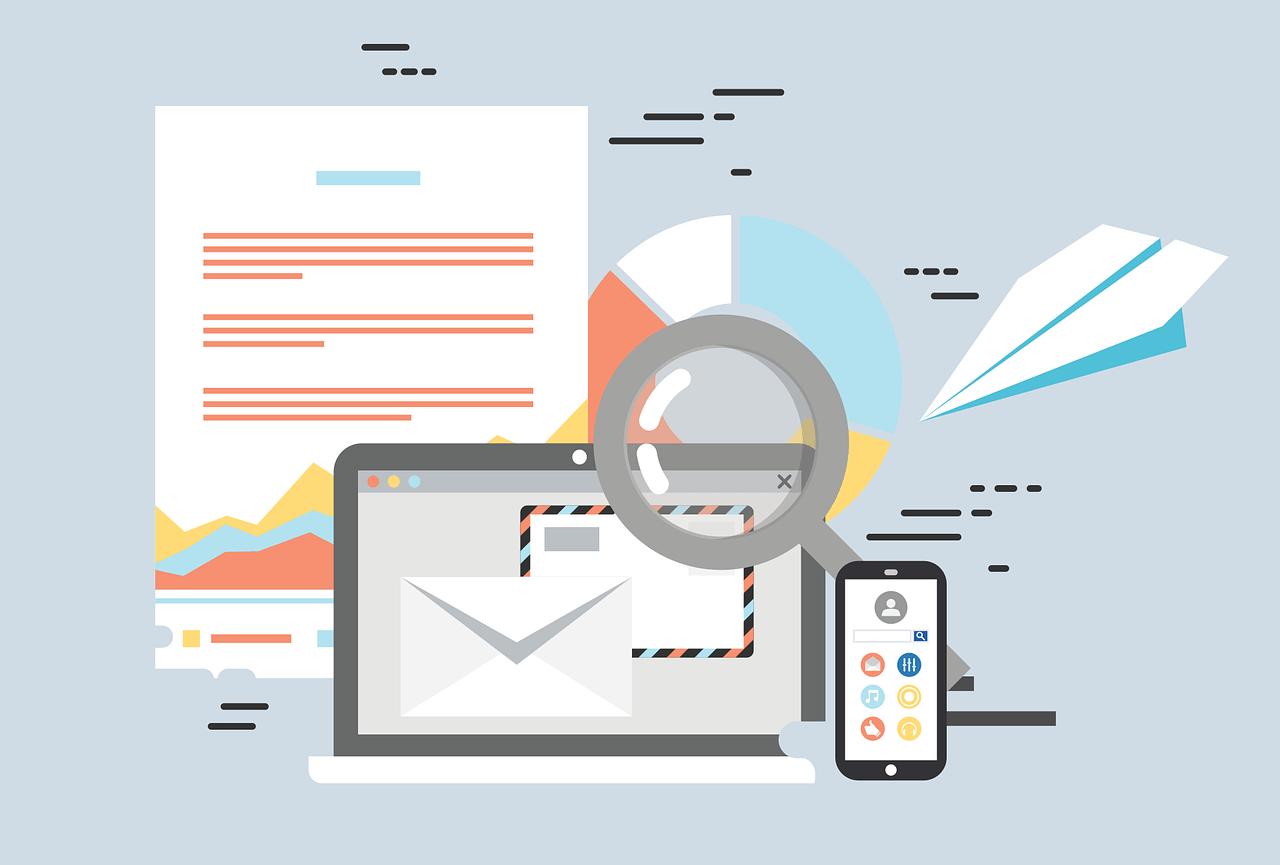Instagram has transformed into a vital platform for small businesses, offering a unique opportunity to boost sales and engage with their target audience. With over a billion monthly active users, Instagram provides an expansive pool of potential customers. In this article, we will guide you through the process of generating sales on Instagram in 2023.
Setting Up Your Instagram Business Account
The first crucial step is establishing your business presence on Instagram. This involves creating a business profile, optimizing your profile information, and selecting a professional profile picture. Converting your account into a business profile grants access to valuable features, including contact buttons, insights, and ad promotions. Research shows that businesses with a business profile receive, on average, 2.5 times more weekly profile visits than those without one[^1].
When optimizing your profile information, be sure to provide accurate and up-to-date details about your business. A study conducted by Instagram found that profiles with complete information tend to receive higher engagement from users[^2]. This includes adding essential contact information and crafting a concise but compelling bio that effectively communicates your brand’s identity and value proposition.
Content Strategy: The Heart of Instagram Success
Your content strategy is at the core of your Instagram success. It’s vital to create eye-catching posts, make the most of Instagram Stories, leverage video content, and post consistently.
Creating eye-catching posts involves using high-quality visuals and crafting compelling captions. Research by Nielsen Norman Group discovered that website users tend to skim-read content[^3]. This holds true for Instagram, where users scroll through their feeds quickly. Captivating visuals and engaging captions can make users pause and interact with your content.
Instagram Stories provide an excellent way to share real-time updates and behind-the-scenes glimpses of your business. According to a survey by Facebook IQ, 58% of people surveyed said they have become more interested in a brand or product after seeing it in Stories[^4]. This feature is a potent tool for creating a sense of immediacy and authenticity in your brand.
Video content is highly engaging and can significantly impact your sales. A survey by Wyzowl found that 87% of video marketers reported that video gave them a positive ROI[^5]. Consider sharing product demos, tutorials, or customer testimonials in video format. This not only provides valuable information but also humanizes your brand.
Maintaining a regular posting schedule is equally crucial. A study by Tailwind found that accounts posting 7 or more times per week receive significantly more engagement and followers compared to those posting less frequently[^6]. Consistency keeps your audience engaged and informed.
By following these initial steps, you’re setting the foundation for a successful Instagram presence for your small business.
Hashtags and Keywords: Boosting Discoverability
To enhance the discoverability of your Instagram posts, you should pay special attention to hashtags and keywords. These elements can significantly impact your reach and visibility.
Utilizing relevant hashtags in your captions is an effective strategy. A study by Simply Measured revealed that posts with at least one hashtag average 12.6% more engagement[^7]. However, it’s essential to use hashtags that are not only popular but also relevant to your content. Research industry-related hashtags to identify the ones that are most likely to resonate with your target audience.
In addition to hashtags, incorporating keywords into your captions and bios can also improve discoverability. Instagram’s search feature scans captions, so using industry-specific keywords strategically can increase your content’s chances of being found. A study conducted by Search Engine Journal found that keyword optimization in captions resulted in higher engagement and visibility[^8].
Engaging with Your Audience: Building Relationships
Engaging with your audience is more than just responding to comments and messages promptly. It’s about fostering genuine relationships with your followers.
Responding to comments and messages promptly is a fundamental aspect of customer service on Instagram. Research by Sprout Social discovered that 48% of customers expect a response within 24 hours[^9]. This timely interaction not only satisfies your audience but also enhances your brand’s credibility.
Consider hosting Q&A sessions to directly address your followers’ queries. Research shows that 61% of consumers find Q&A sessions beneficial when making purchase decisions[^10]. This interactive approach allows you to provide real-time answers and demonstrate your expertise.
Collaborating with your followers can also boost engagement. Instagram’s platform is built on a sense of community, and collaborating with your followers can further solidify this bond. Encourage user-generated content (UGC) by asking your customers to share their experiences with your products or services. A study by TurnTo found that 90% of consumers say UGC influences their purchase decisions[^11].
By actively engaging with your audience, you’re not only nurturing a community but also gaining valuable insights into their preferences and needs.
Influencer Partnerships: Expanding Your Reach
Influencer marketing has become a dominant force on Instagram. Collaborating with influencers can extend your reach and credibility.
Identify potential influencers who align with your brand’s values and target audience. Research by Influencity found that influencer marketing yields, on average, $5.78 in earned media value for every dollar spent[^12]. This indicates a high return on investment when executed effectively.
Building strong relationships with influencers is key to long-term success. Engage with them authentically, and don’t limit the partnership to just one-off campaigns. A study by Influencity also found that long-term collaborations can result in better engagement and trust from the audience[^12].
Running influencer marketing campaigns should be a part of your strategy, but remember that authenticity is paramount. Influencers should genuinely resonate with your brand to ensure the message feels natural.
Instagram Shopping: Seamless Purchasing Experience
Instagram Shopping has revolutionized the way users discover and purchase products. It’s essential to leverage this feature for your small business.
Setting up the shopping feature on your profile is the first step. Research by Instagram Business shows that 70% of shopping enthusiasts turn to Instagram for product discovery[^13]. By enabling Instagram Shopping, you provide users with a direct path to explore and purchase your products.
Tagging products in your posts is an effective way to showcase your inventory. Instagram users can click on these tags to learn more about the featured products. This feature significantly streamlines the purchasing process and can lead to more sales.
Creating a seamless shopping experience on Instagram is key to retaining customers. Research conducted by the Baymard Institute found that 21% of users abandon their shopping carts due to a complicated checkout process[^14]. Ensure that your e-commerce integration with Instagram is user-friendly and efficient.
Analytics and Insights: Data-Driven Decision Making
Understanding how your Instagram strategy is performing is crucial. Utilize Instagram Insights and other analytics tools to track your progress.
Instagram Insights provides valuable data about your audience, post engagement, and more. According to a study by Hootsuite, 91% of marketers believe data analytics are essential to their marketing strategies[^15]. By studying this data, you can refine your content strategy and make data-driven decisions.
Tracking sales metrics is particularly important when your primary goal is to generate sales. Identify which posts are driving the most conversions and analyze the reasons behind their success. Tailor your future content based on this insight.
Adapting your strategy based on data is a continuous process. As the Instagram landscape evolves, staying flexible and adjusting your tactics is essential to maintaining growth and achieving your sales goals.
Incorporating these data-driven practices into your Instagram strategy can significantly impact your success.
Paid Advertising on Instagram: Expanding Your Reach
Paid advertising on Instagram is a powerful tool for small businesses to increase their reach and attract potential customers.
Sponsored posts and stories allow you to reach a broader audience. A survey by Social Media Today found that 50% of users have been influenced by sponsored posts on Instagram[^16]. Creating eye-catching and relevant sponsored content can lead to conversions.
Instagram Shopping ads take your e-commerce strategy to the next level. According to a study by AdEspresso, Instagram Shopping ads can lead to a 1.72% conversion rate[^17]. These ads display product details and prices directly within the platform, making it easier for users to make purchase decisions.
Budgeting and targeting are essential when it comes to paid advertising. Allocate your budget wisely and utilize Instagram’s detailed targeting options to ensure your ads reach the right audience.
By including paid advertising in your Instagram strategy, you can significantly amplify your reach and sales potential.
User-Generated Content: Harnessing the Power of Your Customers
User-generated content (UGC) is a remarkable resource for building trust and engagement.
Encouraging customers to create content can foster a sense of community and brand loyalty. A study by Bazaarvoice found that 84% of millennials are influenced by user-generated content when making purchase decisions[^18]. Encourage customers to share their experiences with your products or services, and consider running UGC campaigns with incentives like contests or giveaways.
Reposting UGC on your own profile can enhance trust and authenticity. Research by Yotpo revealed that 77% of consumers say that UGC makes them feel more authentic and trustworthy[^19]. Showcase your happy customers and let their experiences speak for your brand.
Building brand loyalty through user-generated content is an effective way to create a loyal customer base. When your customers become advocates for your brand, they not only bring in new customers but also contribute to the positive image of your business.
Customer Testimonials and Reviews: Building Trust
Sharing customer testimonials and reviews can significantly build trust with potential buyers.
Showcasing positive feedback can reassure potential customers. A study by BrightLocal found that 82% of consumers read online reviews for local businesses, with 52% saying they’d only consider using a business with a 4-star rating[^20]. Share positive customer experiences and highlight the aspects of your business that resonate with your audience.
Addressing negative feedback professionally is equally important. A study by ReviewTrackers found that 53% of customers expect businesses to reply to negative reviews[^21]. Demonstrate your commitment to customer satisfaction by addressing concerns and seeking resolutions.
Using reviews to build trust is a continuous process. Encourage satisfied customers to leave reviews and maintain a responsive attitude toward feedback.
Instagram Challenges and Giveaways: Expanding Your Reach
Hosting Instagram challenges and giveaways is an effective strategy to engage your audience and expand your reach.
Engaging challenges can boost participation and broaden your reach. According to a study by The Shelf, running a challenge can increase your engagement rate by 25%[^22]. Challenges encourage user interaction and create a sense of community.
Offering attractive giveaways is another way to engage your audience and expand your reach. A study by Easypromos found that 52% of users follow a brand on social media for the chance to win free products[^23]. By offering valuable prizes and structuring your giveaway effectively, you can attract a wider audience and generate excitement around your brand.
Expanding your reach through challenges and giveaways is not only a fun approach but also an effective one. These strategies can be particularly valuable for small businesses looking to grow their Instagram presence.
Partnerships and Collaborations: Strengthening Your Network
Collaborating with complementary businesses can open up new opportunities for growth and reach.
Teaming up with businesses that complement yours can lead to mutually beneficial partnerships. A study by Edelman found that 71% of consumers believe brands should work with influencers whose values match their own[^24]. Partnering with like-minded businesses can help you tap into new audiences and markets.
Joint campaigns and promotions can further strengthen your network and reach. By cross-promoting each other’s content and products, you can reach a wider audience and create a sense of community among your customers.
Expanding your network through partnerships and collaborations is a strategic approach that can lead to lasting benefits for your business.
Measuring Success: The Key to Continuous Growth
Measuring the success of your Instagram strategy is paramount. Setting clear goals, tracking sales growth, and adapting your strategy based on data are crucial components of your ongoing success.
Setting Clear Goals
Your Instagram strategy should align with specific and measurable goals. This can include goals related to follower growth, engagement, or, most importantly, sales. Having clear objectives gives your strategy direction and allows you to track your progress effectively.
Tracking Sales Growth
When your primary goal is to generate sales, tracking your sales growth is essential. Utilize tools like Google Analytics or Instagram Insights to monitor how your Instagram efforts are translating into sales. Keep a close eye on metrics like website traffic, conversion rates, and revenue directly attributed to Instagram.
Adapting Your Strategy Based on Data
Data-driven decision-making is the cornerstone of a successful Instagram strategy. Regularly review your performance metrics, and don’t hesitate to adjust your approach based on what the data reveals. This might involve refining your content strategy, revising your posting schedule, or reallocating your budget to the most effective tactics.
In 2023, Instagram remains a powerful platform for small businesses to generate sales and connect with their audience. By setting up your business account, crafting a robust content strategy, utilizing hashtags and keywords effectively, engaging with your audience, exploring influencer partnerships, leveraging Instagram Shopping, and incorporating data-driven practices, you can position your business for growth and success.
Instagram provides a dynamic and ever-evolving space for businesses to thrive. As you navigate this landscape, remember that adaptability, creativity, and consistent analysis are key to staying ahead in the game. With the right strategy and a genuine commitment to your customers, you can make Instagram a significant driver of sales for your small business in 2023.
Frequently Asked Questions (FAQs)
1. How often should I post on Instagram for my small business?
Posting at least once a day is generally recommended. However, you should adjust your posting frequency based on your audience’s preferences and your capacity to create high-quality content.
2. Is influencer marketing worth it for small businesses?
Influencer marketing can be highly effective for small businesses, provided you collaborate with influencers who align with your brand and have a genuine connection with their followers.
3. What are some effective strategies for running Instagram challenges?
Engaging challenges on Instagram often involve user participation and creativity. Ensure your challenge has clear rules, attractive prizes, and a unique hashtag to promote it effectively.
4. How can I encourage customers to leave reviews on Instagram?
You can encourage customers to leave reviews by providing exceptional service and asking for feedback. You can also offer incentives like discounts or freebies in exchange for honest reviews.
5. How do I set up Instagram Shopping for my business?
To set up Instagram Shopping, you need to have a business profile and be located in an eligible market. You should also connect your Instagram account to a Facebook catalog and ensure your products comply with Instagram’s commerce policies.




